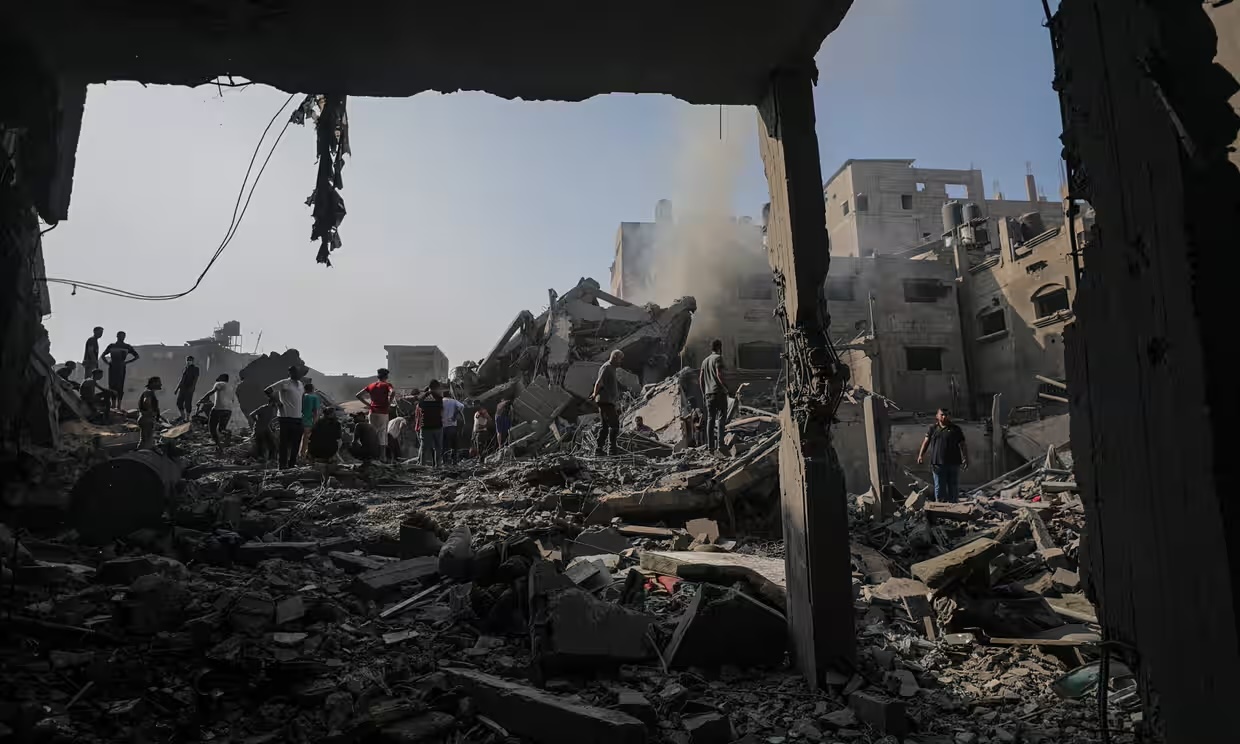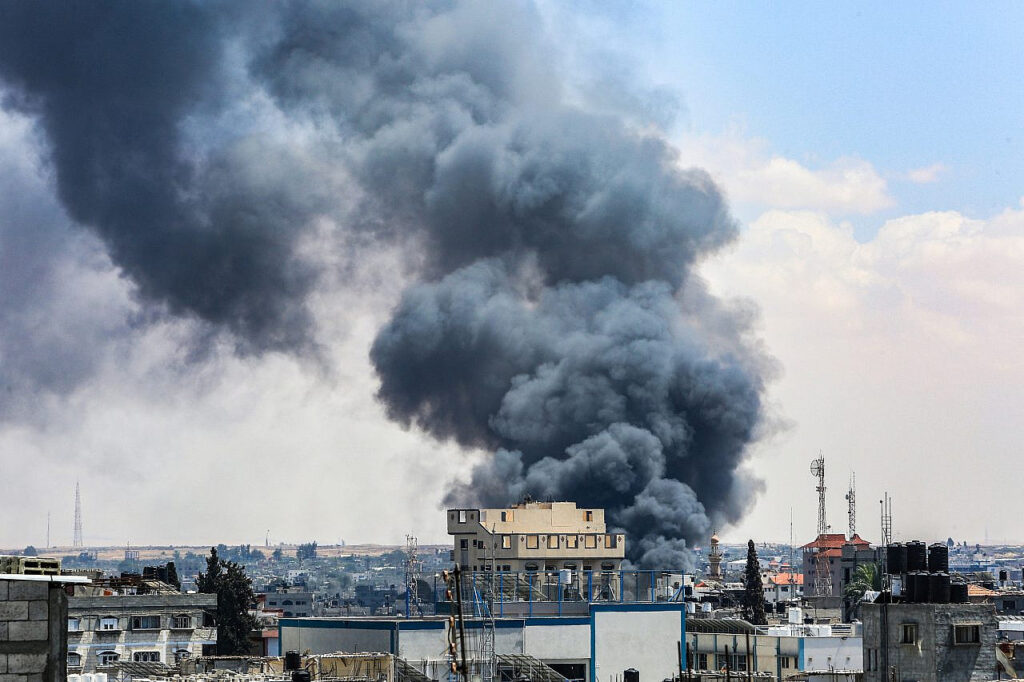A look into the largest student anti-war movement in a half-century.

Questions and answers for Biden.

We’ll admit it — we’re confused. One day we read that Biden is excited about Israel’s ceasefire plan. And we think maybe a ceasefire is finally imminent. The next day Israeli officials say that it’s Biden’s plan, and it’s unacceptable. And we think maybe a ceasefire isn’t so imminent.
If you’re confused too, read on.
As the Biden administration and the Israeli government publicly bicker over the terms of a new ceasefire deal, we’ve all got some questions for the U.S. President.
Whose plan even is this?
Biden presented the latest plan for a ceasefire on Friday, and the U.S. State Department confirmed that it had been delivered to Hamas leadership.
The U.S. government claimed this plan is an Israeli proposal — but the Israeli government has already distanced itself from it.
Why could a ceasefire provoke the Israeli government’s collapse?
Not only are the U.S. and Israel not on the same page, the Israeli government is splintering apart, with some officials acknowledging the plan and other ultra-right-wing extremists like Bezalel Smotrich and Itamar Ben-Gvir threatening to resign if the Israeli government takes any step towards ending its genocide of Palestinians.
How is this week’s plan different from the plan that was rejected by Israel over a month ago?
This three-phase plan bears striking similarity to the ceasefire deal that the Israeli government rejected at the beginning of May. The newest plan would also implement a ceasefire in three phases, starting with a release of Israeli hostages, a retreat of Israeli forces from Gaza, and the entrance of direly- needed humanitarian aid that the Israeli military is currently blocking.
Like the prior plan, the second and third phases would include negotiations for Palestinian prisoners and further hostage releases and the reconstruction of Gaza, respectively. One difference in the new plan is that the temporary ceasefire would extend for as long as negotiations continue.
Will the Biden administration explain why it’s still arming an Israeli military hell-bent on crossing every “red line” that it has set — including invading Rafah and re-displacing over 1 million refugees?
As these negotiations drag on, the Israeli military is continuing its catastrophic ground invasion of Rafah, a total humanitarian disaster that has already displaced more than 1 million Palestinian refugees. There is nowhere in Gaza to flee from Israeli bombs. Months of Israeli decimation, including intentionally blocking humanitarian aid, mean that the conditions on the ground are “apocalyptic” and unfit for human life.
At each new horror Israel inflicts, the Biden administration expressed regret and sadness. But then why does the U.S. government continue sending billions in military support to Israel?
What ever happened with the U.S.’s “humanitarian pier” that it claimed would deliver desperately-needed aid to the millions being bombed and starved in Gaza?
Building a “pier” to bring aid into Gaza was always a non-solution to a humanitarian crisis that the U.S. government was actively creating, an absurd attempt to save face in the eyes of the international community while still selling Israel the weapons it uses to slaughter Palestinians. Now, the $320 million pier has broken apart, and the small amount of aid that was entering through it has been cut off.
Regardless, the pier is a “sideshow,” said the director of the International Rescue Committee. The reality in Gaza is dire. The Israeli military has destroyed nearly all medical services in Rafah, famine is widespread, and UNRWA, the largest aid agency, has had to cease operations in Rafah. Last week, 20 aid agencies operating in Gaza released a joint letter warning that while there is “a mirage of improved access… “the humanitarian response is in reality on the verge of collapse” in all of Gaza. They identified an immediate ceasefire as the only way forward.
How can we end these horrors?
Ongoing ceasefire negotiations have not translated into even a halt in the Israeli military’s bombardment and starvation of Palestinians. The Israeli government has consistently disregarded Biden’s pro-ceasefire rhetoric, escalating its genocidal attacks. But there’s a clear answer to all these questions: Biden could impose an arms embargo and cut off U.S. weapons sales to Israel tomorrow.
Following Biden’s recent decision to withhold arms from Israel in response to its ground invasion of Rafah, polling showed that the majority of U.S. Jews agreed with this move. A full 30% of U.S. Jews think the Israeli government is conducting a genocide of Palestinians. And 7 in 10 of all U.S. voters support a permanent ceasefire in Gaza. Despite this, the U.S. continues to send billions of dollars in weapons to arm Israel’s horrific massacres. We know that the flow of U.S. weapons to arm Israeli genocide can end, right now, with an arms embargo — and that’s what we’re fighting for.
Stop arming Israel.
Our demand is clear: the U.S. must impose an arms embargo on the Israeli government immediately.
Take a minute and use this tool from our sibling organization JVP Action to email your elected officials now.
What we’re reading.

This piece in +972 Magazine follows 23-year-old Palestinian journalist Marah Mahdi and her family’s perilous journey through Gaza to escape the Israeli military’s relentless onslaught, having been displaced 11 times since October.
“’When we fled northern Gaza to Rafah, we thought that was it. No more fear, no more death. But we have lived a reversed reality since then,’ Mahdi said. ‘Each time [we’re displaced] feels just as agonizing and terrifying as the first — utter despair and terror.'”
Find the Wire useful? Support this work with a contribution today.
Explore Resources
Get
the Wire
Stay up to date on the most important news from Palestine and the Palestine solidarity movement, and receive action alerts and invitations to online events.